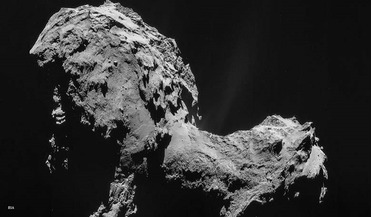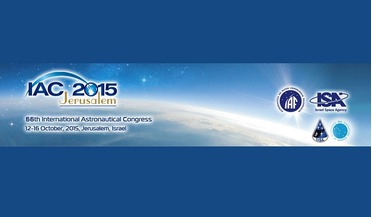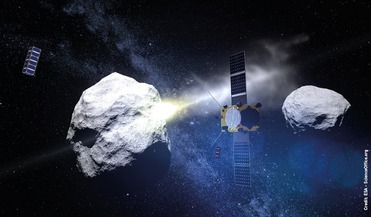 August 2017
Big science from small spacecraft
August 2017
Big science from small spacecraft
... longer and will require a higher standard of reliability: ESA’s flagship Rosetta mission took 10 years to rendezvous with comet 67P/Churyumov–Gerasimenko. Such long mission durations are not unusual when we plan missions to chase the so-called...
 15 June 2015
Rosetta’s Philae lander awakens
15 June 2015
Rosetta’s Philae lander awakens
... news due to the major importance of the Rosetta mission, which is doing a detailed study of the comet 67P/Churyumov–Gerasimenko. The study of comets is not merely the study of faraway worlds – it can also provide vital clues about life...
 June 2015
The day Philae landed: how a rough touchdown still made history at the Rosetta Mission
June 2015
The day Philae landed: how a rough touchdown still made history at the Rosetta Mission
... by Philae of Rosetta seconds after separation. Left: Philae imaged by Rosetta’s OSIRIS camera during the descent to the comet surface. This confirmed that the landing gear had unfolded. Whilst attached to Rosetta, Philae continuously communicated...
 15 November 2014
Pioneering Philae completes main mission before hibernation
15 November 2014
Pioneering Philae completes main mission before hibernation
... planned for the final block of experiments on the surface. First comet panoramic In addition, the lander’s body was lifted by about 4... While descent images show that the surface of the comet is covered by dust and debris ranging from millimetre ...
 26 August 2015
Rosetta Experts to Present the Mission at International Astronautical Congress in Jerusalem
26 August 2015
Rosetta Experts to Present the Mission at International Astronautical Congress in Jerusalem
... from the point of its initial conception. The interplanetary cruise took more than 10 years. The target, comet 67P Churyumov-Gerasimenko, was reached in August 2014. During the long cruise, the spacecraft had been put...
 October 2015
Taking AIM with ESA: proposing the first visit to a binary asteroid system
October 2015
Taking AIM with ESA: proposing the first visit to a binary asteroid system
...first mission to a small body since Rosetta landed on a comet. With its micro lander and accompanying flock of CubeSats, AIM ... flybys to finally achieve its triumphant rendezvous with Comet 67P/Churyumov–Gerasimenko. The AIM spacecraft observes NASA’s...